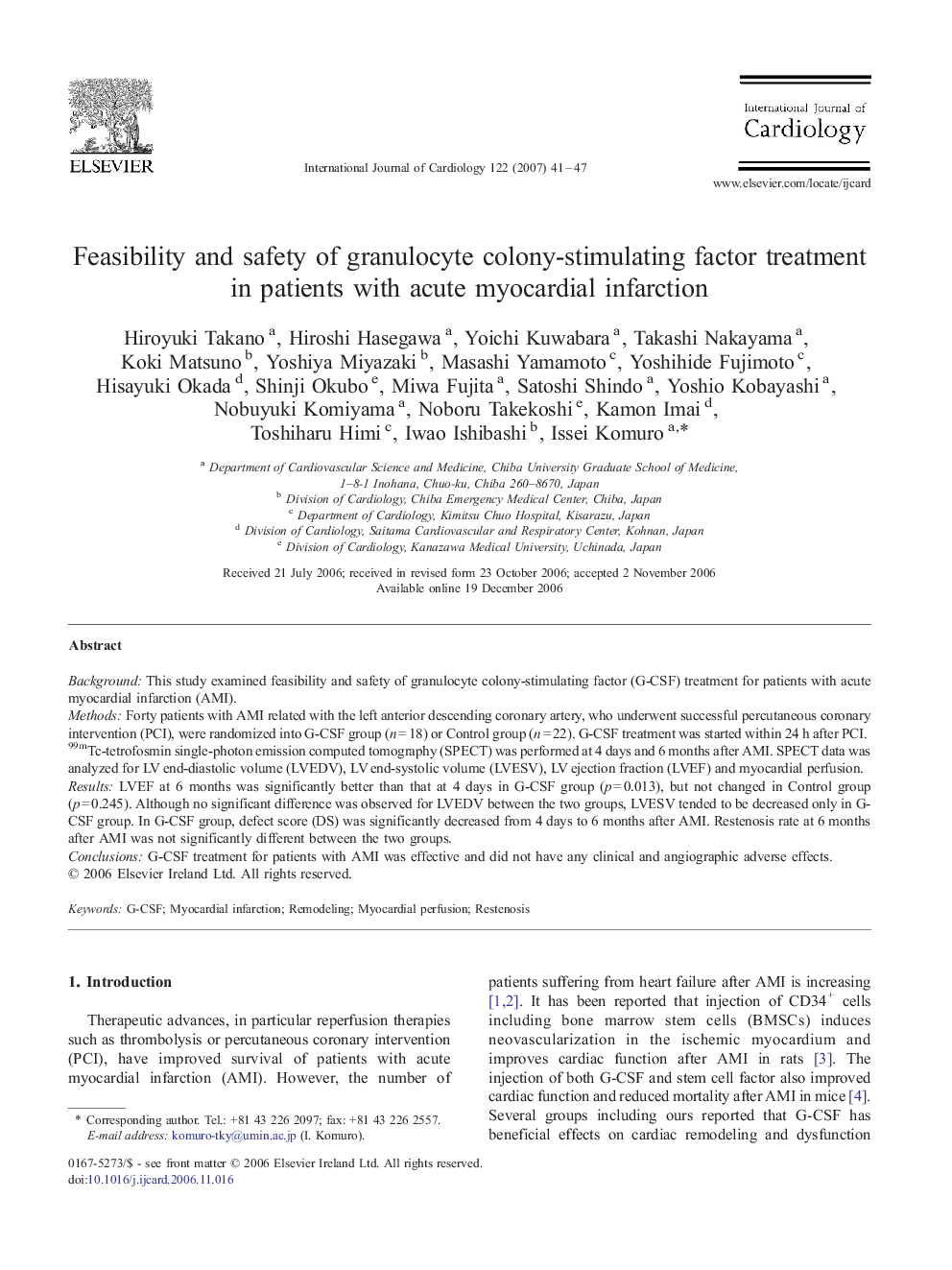| Article ID | Journal | Published Year | Pages | File Type |
|---|---|---|---|---|
| 2935130 | International Journal of Cardiology | 2007 | 7 Pages |
BackgroundThis study examined feasibility and safety of granulocyte colony-stimulating factor (G-CSF) treatment for patients with acute myocardial infarction (AMI).MethodsForty patients with AMI related with the left anterior descending coronary artery, who underwent successful percutaneous coronary intervention (PCI), were randomized into G-CSF group (n = 18) or Control group (n = 22). G-CSF treatment was started within 24 h after PCI. 99mTc-tetrofosmin single-photon emission computed tomography (SPECT) was performed at 4 days and 6 months after AMI. SPECT data was analyzed for LV end-diastolic volume (LVEDV), LV end-systolic volume (LVESV), LV ejection fraction (LVEF) and myocardial perfusion.ResultsLVEF at 6 months was significantly better than that at 4 days in G-CSF group (p = 0.013), but not changed in Control group (p = 0.245). Although no significant difference was observed for LVEDV between the two groups, LVESV tended to be decreased only in G-CSF group. In G-CSF group, defect score (DS) was significantly decreased from 4 days to 6 months after AMI. Restenosis rate at 6 months after AMI was not significantly different between the two groups.ConclusionsG-CSF treatment for patients with AMI was effective and did not have any clinical and angiographic adverse effects.
